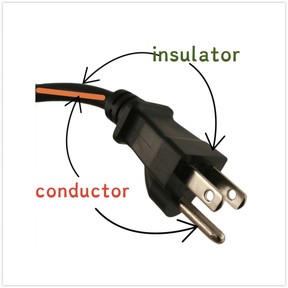
Conductors and insulators
I can describe the properties of conductors, resistors, and insulators.



8,000 schools use Gynzy
92,000 teachers use Gynzy
1,600,000 students use Gynzy
General
In this lesson, students will go over atoms, conductors, insulators, resistors, voltage, and series circuits. This will prepare them for the lab at the end of the lesson in which students will have an open series circuit and put different objects from the classroom in to see if they are conductors or insulators. There is a worksheet for the lab (located on the title slide and Slide 17.
Standards
NGSS:
4-PS3-2
5-PS1-3
Learning objective
Students will be able to describe the properties of conductors, resistors, and insulators and explain why they are useful.
Introduction
Students will think about the types of electricity they know about and then discuss static and current electricity. Knowing about insulators, conductors, and resistors can help students protect themselves.
Instruction
Students will review atoms and their basic parts: protons, neutrons, and electrons. They will then sort items that would make good conductors. Next, they will talk about not mixing electricity with water since it can conduct electricity. They will also look at the types of materials that are good insulators, such as rubber and plastic. Resistors slow the current. Students will voltage and series circuits.
Quiz
Review the lesson with 3 true/false and 7 multiple-choice questions.
Closing
Have students recall what they learned by filling in the blanks in a paragraph summarizing the lesson. They will watch a video to see what will complete a circuit. Lastly, they will make a circuit and test different conductors and insulators.
Instruction materials
- open series circuit
- everyday objects from around the classroom
- worksheet (available on title slide and Slide 17)
The online teaching platform for interactive whiteboards and displays in schools
Save time building lessons
Manage the classroom more efficiently
Increase student engagement
Discover more!
About Gynzy
Gynzy is an online teaching platform for interactive whiteboards and displays in schools.
With a focus on elementary education, Gynzy’s Whiteboard, digital tools, and activities make it easy for teachers to save time building lessons, increase student engagement, and make classroom management more efficient.



